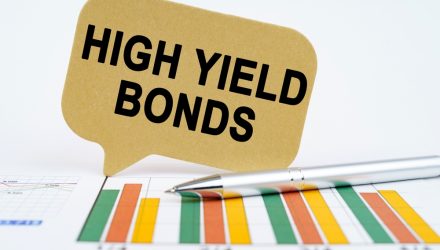Using active management to invest in high yield bonds provides multiple advantages. Active management allows for fundamental analysis and security selection across the entire high yield universe and enables investors to nimbly reposition a portfolio to take advantage of macro trends or capitalize on relative value opportunities.
In a white paper published by T. Rowe Price, the investment firm makes its case for why investors should take advantage of its active, flexible, concentrated approach to the high yield market through its recently launched T. Rowe Price U.S. High Yield ETF (THYF).
The paper’s authors note the drawbacks associated with passive high yield investing. The bond market is a substantially larger and more complex investment universe than that of stocks. Trading costs are higher for high yield bonds than for equities. Bond indexes experience higher turnover than most equity indexes. Not to mention, most large passive ETFs impose minimum size requirements, which can reduce the investable universe and result in passive ETF holdings being concentrated on the largest, most liquid bonds within the index.
“As a result, tracking error for passively managed high yield strategies tends to be high relative to equities, and it has been very difficult for passive strategies to outperform over longer time periods,” according to T. Rowe Price.
So, the high yield market provides many opportunities for an active manager to add value.
Security Selection Through Fundamental Research
Since the high yield market is inherently inefficient, T. Rowe Price relies on fundamental research to identify and take advantage of various market inefficiencies. This can provide opportunities to anticipate credit rating upgrades or downgrades.
Using the Full Opportunity Set
In looking to take advantage of opportunities, an active manager can invest across the entire universe of high yield names among issuers of all sizes. It can also add out-of-benchmark exposures like bank loans or preferred securities.
Nimble Positioning and Value Considerations
An active manager can overweight or underweight specific credit rating categories, industries, or securities in its portfolios based on economic trends, relative value assessments, and expectations for future risk-adjusted returns. This flexibility can be useful during changing market conditions or when certain market sectors are heavily in or out of favor.
Trading and Relationships With Wall Street Dealers
High yield fixed income trading is largely conducted over the counter rather than on an exchange. Since liquidity can be a challenge in the high yield bond market, specific bond issues are often not available in the desired amounts, and trading costs can be punitive. An active manager can leverage their experience and relationships with Wall Street bond dealers to source unique deals and market insights.
Risk Management
Considering the risks associated with defaults in the high yield market, an active approach permits more thorough risk management. Since passive strategies typically weight holdings based on the market value of an issuer’s outstanding bonds, companies with the heaviest debt loads — which are more likely to default — typically garner the largest weights in passive strategies. Meanwhile, an active approach assesses the full corporate balance sheet to determine which companies may be best positioned to meet both their current and future debt obligations.
THYF aims to generate a total return in excess of that of the index by investing primarily in U.S. dollar-denominated high yield corporate bonds and other fixed‑ and floating-rate corporate securities. The fund is designed to provide a concentrated yet balanced portfolio primarily focused on the traditional U.S. high yield bond investment opportunity set.
T. Rowe Price has been in the investing business for over 80 years, conducting field research firsthand with companies, utilizing risk management, and employing a team of experienced portfolio managers carrying an average of 22 years of experience.
For more news, information, and analysis, visit the Active ETF Channel.








